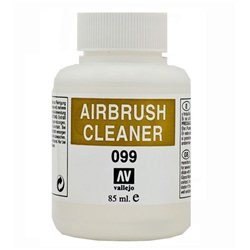Static grass puffer bottles work by manually charging model grass fibres with static electricity. When the charged...
No products
Product successfully added to your shopping cart
There are 0 items in your cart. There is 1 item in your cart.
Search Tips
How do I clean an airbrush after painting a scale model?
Keeping your airbrush clean is very important and you need to do it straight after using it. Even a tiny bit of dried paint left can really mess up how well your airbrush works and make the paint spray come out all wrong.
First off, clean out the paint cup or jar with a bit of kitchen roll, getting out as much paint as you can. Then half fill the cup with airbrush cleaner (or thinners if you don't have cleaner). Spray that through into some kitchen roll until you can't see any paint coming out.
Next, hold a piece of kitchen roll over the needle tip and pull the trigger. This forces air and cleaner back through the airbrush, clearing any dried paint that's stuck inside. You'll see bubbles forming in the cup as it's pushing the cleaner back out.
Do this full cleaning routine every single time after you've been airbrushing. It's vital for keeping your airbrush in tip-top shape and spraying properly.
Every now and then, you'll need to strip the airbrush right down and give it a really good deep clean. Take the needle and nozzle off and leave them soaking overnight in some cleaner solution.
Be really careful with the needle tip though - if you damage or bend it even a tiny bit, your airbrush will never spray right again until you get a new needle fitted.
Click here to receive the tips weekly in your mailbox. You can unsubscribe at any time.










